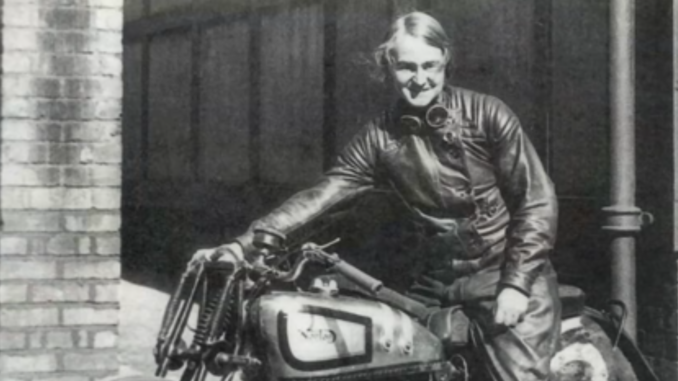
When the Battle of Britain began in July 1940, the Supermarine Spitfire was a brand-new fighter aircraft barely tested in combat other than in the defense of troops pinned down at Dunkirk. Britain’s RAF (Royal Air Force) had twice as many Hawker Hurricanes as Spitfires to defend against the German Luftwaffe, but the Hurricane was a bit outmatched by the Messerschmitt Bf-109, whereas the Spitfire and 109 were more evenly paired. With that knowledge in mind, British defense strategy assigned Spitfires to take on invading Messerschmitt fighters, while Hurricanes went after German bombers. However, it quickly became apparent that the Spitfire had one serious, even fatal, design flaw.
Luftwaffe aircraft were equipped with fuel-injection engines. This was a more fuel-efficient arrangement, an important consideration for a country without a great deal of natural petroleum resources. On the other hand, the Spitfire’s Merlin engine was carbureted – a design decision that nearly cost the British air superiority, the entire air battle, and perhaps even the war.
The problem would express itself, for example, when a Spitfire was on the tail of a Messerschmitt and the Bf-109 dived to escape. The Spitfire pilot would dive after the German, causing the Merlin to sputter from lack of fuel, followed quickly by receiving too much fuel. Too much fuel was evident by thick black smoke belching from the exhaust. If the Spitfire pilot was fortunate, this brief power lag would only result in the enemy plane getting away. If he was unfortunate, the engine would flood, quit running and may or may not restart. Whether the British pilot was able to restart the engine or not, he was vulnerable to attack during this moment of helplessness. German pilots recognized when a Spitfire was in trouble like this and took advantage of the weakness. Spitfires were shot down and pilots were killed.
This carburetor failure occurred only during certain maneuvers, such as pitching the nose of the Spitfire down into a dive, or any other maneuver that induced negative G-force on the plane. Pilots could always tell when negative G-force was acting on the carburator because the same G-force would push the pilot upwards against his shoulder straps. Under the engine cowl, fuel in the carburator float chamber would be forced away from the metering jet. In normal carburator operation, the metering jet sprays fuel into the venturi tube where it is mixed with air. The air-fuel mixture is then sucked into the engine’s pistons.
Under negative G-force, the engine is starved for fuel and sputters until the G-forces subside and fuel settles back down to the bottom of the float chamber where the metering jet is. The problem is easier to understand while watching the graphic animation in “The Spitfire’s Fatal Flaw” (4:40):
The best solution to the problem was to replace the float chamber carburators with pressurized carburators. This involved significant downtime, however, and no planes could be spared during the Battle of Britain. Engineers were directed to find a quick, temporary fix that would see the RAF and it’s pilots through Britain’s finest hour.
Beatrice “Tilly” Shilling (1909-1990) grew up fascinated with machines and motors. As a teenager, she took apart motorcycles and rebuilt them to make them faster, and of course, she raced them. She graduated Manchester University with a degree in Electrical Engineering in 1932, one of only two women in her class. In 1933, she completed a master’s degree in Mechanical Engineering and went to work for the Royal Aircraft Establishment (RAE), in Farnborough. In her free time, she rebuilt a 500cc Norton, adding a supercharger to it. With this motorcycle, she set speed records (106mph track lap time), won awards – including the BMCRC (British Motorcycle Racing Club) Gold Star – and continued racing. She married engineer George Naylor in 1938, but only after he himself achieved a 100mph motorcycle track laptime (it was one of her requirements for marriage). During the war, George was an RAF bomber pilot.
At work in the RAE shops, she eventually found herself mastering aircraft carburators just as the Second World War began. Reasoning that the Merlin engine was flooding because it was getting too much fuel when the negative G-force subsided, Tilly calculated the amount of fuel the engine needed at full power, then calculated the size the fuel inlet to the float chamber needed to be for just that much fuel and no more. Finding that the as-built fuel inlet was much too big, she designed a brass washer with a precise hole in the middle to limit fuel flow to only what the Merlin needed at full power. The brass washer could be installed quickly in the field, allowing Spitfires to remain in the battle. It was a temporary fix that prevented the Merlins from flooding and quitting, although it didn’t solve the fuel-starved sputtering. A permanent fix came after the Battle of Britain was well over, when aircraft could be spared downtime for the installation of pressurized carbs.
Tilly was awarded the Order of the British Empire (OBE) for her war work. She continued on at RAE until her retirement in 1969. Until then, after the war she designed and raced cars with her husband (continuing as late as the 1960s), earned a PhD, and worked on many different aviation and aerospace projects.
Her greatest legacy, though, is helping the RAF beat the Luftwaffe. Had the Luftwaffe attained air superiority, a German invasion of Britain would have been likely. The German command had a plan ready for it: Operation Sea Lion.
“Beatrice Shilling (1909-1990) Spitfire saviour & engineering pioneer (UK) – BBC – 1st August 2018” (4:53):
Question of the Night: Choose your cosplay character: motorcycle racer, fighter pilot, or mild-mannered geeky engineer?
